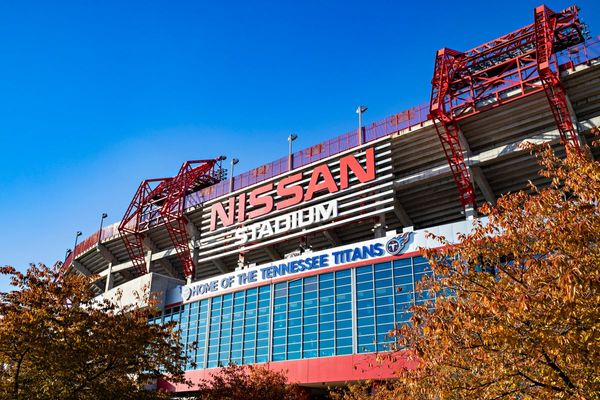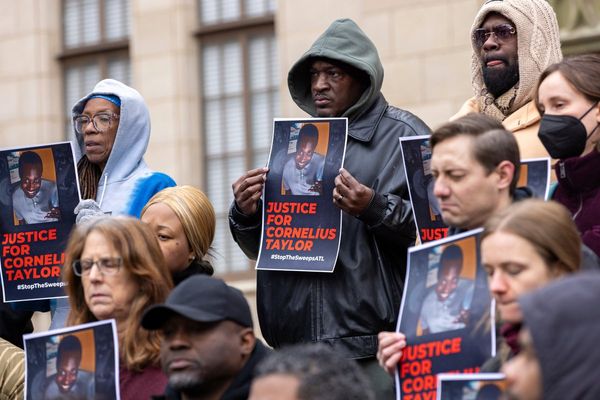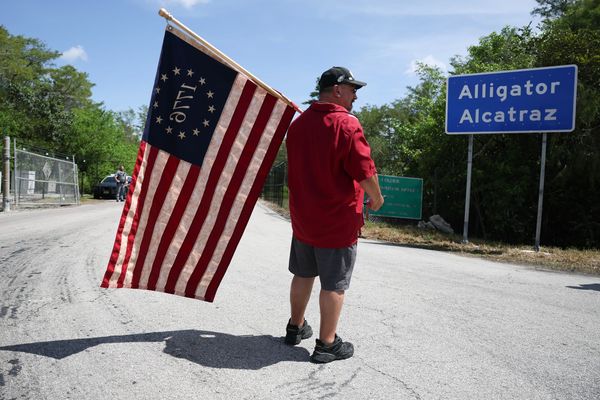
Triple Eight duo Shane van Gisbergen and Broc Feeney were stripped of first and second position from the opening leg of Newcastle 500 on March 11, with Tickford's Cam Waters declared the eventual winner of the race.
The Red Bull Camaros were found to have positioned a dry ice radiator for a helmet fan on the driver's side of the car and not the passenger side, in direct breach of Supercars' technical regulations.
After stewards scrubbed both cars from the race, Triple Eight lodged an appeal against the ruling and a meeting was held at Motorsport Austrai's office in Melbourne on Wednesday.
A three-person panel consisting of Walter Sofronoff KC, Steve Chopping and Ross Jackson upheld the decision, meaning both reigning champion van Gisbergen and Feeney were officially disqualified from the race.
Now, on Friday evening, Motorsport Australia has released the full findings of its hearing, which can be found below.
As part of its appeal, Triple Eight argued that it had received verbal approval of the positioning of the system by Supercars Head of Motorsport Adrian Burgess. However, in a statement provided to Motorsport Australia, Burgess "emphatically" denied giving T8 permission to deviate from the rules.
Motorsport Australia also rejected Triple Eight's claim that Burgess has the power to give an informal waiver of the rules, stating that 'even if the HoM had “instructed’ [Triple Eight boss Mark] Dutton in the way in which he submits he was instructed, it could make no difference. '
Finally, the governing body concluded that Triple Eight had no ground against its appeal that the penalty handed to it was too severe.
Full Motorsport Australia Statement
1. The first and second place-getters in Race 1 of the 2023 Repco Supercars Championship were entered by the appellant, Triple Eight Race Engineering (Aust) Pty Ltd. In post-event scrutineering it was observed that a system in each car for cooling the driver had been placed on the right-hand side of the driver’s seat. Rule C16.2.1.1 provides:
16.2.1 Any Driver cooling system that contains a cooling medium must be:
16.2.1.1 mounted within the cockpit utilising the mounting points designated in the GSD for the passenger seat; and
16.2.1.2. constructed in a manner which to the satisfaction of the HoM, has been designed to ensure the safe containment of the entire system during reasonably foreseeable loading conditions.
2. It is undisputed that the placement of the cooling systems constituted breaches of that Technical Rule.
3. Charges were laid alleging a breach of that rule. Protests were also lodged by two other competitors, WAU Racing Pty Ltd and Tickford Racing Pty Ltd. Both of these competitors alleged breaches of the same rule; Tickford Racing also alleged a breach of another rule but that issue is no longer live and need not be considered any further. The Stewards convened a hearing and it was held that evening.
4. The appellant admitted that the placement of the systems did not conform to Rule C16.2.1.1. However, the appellant submitted that the HoM had given the team permission to use the system as installed. Mr Dutton, the team manager of the appellant gave evidence about this as follows: And then I said we’ve actually – we now have helmet air cooling, dry ice. As well as the – the electric cooling. The – the [chillout] box, which does the cool suit. So we’ve – we’ve not got two systems mounted. I spoke about how we’ve mounted it on the r- right-hand side do it’s – it’s away from any heat source. It’s not on the muffler, etcetera like the cool suit is. And it should be more efficient. The length of the fuel stops that we should be able to refill it in the pit stop, etcetera. If – if we need to. So went into – to a – a bit of conversation about that.
5. The HoM, Mr Adrian Burgess, gave evidence that was not materially inconsistent with the evidence of Mr Dutton but he emphatically denied that he had given Mr Dutton permission to deviate from the rules.
6. On the basis of this conversation, the appellant submitted that the non-conformity should be treated as one that had been permitted by the HoM.
7. The Stewards found that the HoM had not granted permission to the appellant to install the systems contrary to the Rule. They found that there had been a breach of a Technical Rule and disqualified both cars.
8. The appellant appeals on two grounds. (a third ground has been abandoned):
a. That the Stewards ought to have concluded that an instruction had authorised the system as installed;
b. That the Stewards had failed to consider Rule C2.4.
9. The appellant also appeals against the severity of the penalty as well as the procedure used to impose it.
10. On the hearing of this appeal the appellant sought leave to adduce further evidence in the form of a statement by Mr Dutton. If the Court allowed this statement to be admitted, the respondent sought leave to adduce evidence of its own by way of reply. This was by way of a statement by one of the Stewards and a statement by the HoM, Mr Burgess. The Court reserved its decision whether to grant leave and invited the parties to make submissions upon the assumption that the statement would be admitted.
11. Having now considered the matter fully, with one exception, the tender of each of these statements is rejected on the basis that all of this evidence could reasonably have been adduced before the Stewards. The exception is that paragraph 40 of Mr Dutton’s statement is admitted. It concerns a statement made to the Stewards after the hearing but before a decision had been announced. The statement does not otherwise appear in the transcript.
12. The respondent also wished to tender a statement by one of the Stewards, Mr McMahon. The Court rejects the tender of that statement on the ground that there can be no occasion for a Steward to explain the reasons of the Stewards on an appeal. As a matter of strict definition, the Stewards’ reasons contain all of their reasons and must be understood as they are stated. No further explication is necessary or permitted. Mr McMahon was also invited by the respondent to give some evidence about the further evidence referred to by Mr Dutton in paragraph 40 of his statement. It is undesirable to ask officiating Stewards to become witnesses at a later appeal. Such a course risks impairing the perception of impartiality of adjudicators that is crucial to the maintenance of fair competition.
13. On the basis of the conversation as described by Mr Dutton, the appellant contends that the HoM had given permission for the system to be installed in the manner in which it was installed.
14. The Stewards rejected this submission and found that the HoM had not given permission to the appellant. They found that, while Mr Dutton might have believed that that was so, his belief was mistaken.
15. On the evidence before us, including Mr Dutton’s recent statement, we are of the respectful opinion that the Stewards’ finding was correct. Put at its highest, on Mr Dutton’s evidence Mr Burgess had agreed with Mr Dutton that the use of the system was a good idea; he said nothing about its placement and it is not even clear that he had turned his mind to the content of the rule about placement. It is unnecessary to consider the facts surrounding the alleged instruction because such an instruction could have had no effect.
16. The HoM has no authority to give an informal waiver of a rule to one competitor. The appellant has submitted that Rule 2.1.6 confers such power. It provides:
Each Competitor is responsible for ensuring that their Car complies with the conditions of eligibility contained in the Rules throughout each Event and all Supercars authorised activities including all rides at a Supercars Test Days as described in Rule D1, unless instructed by the HoM.
17. Rule 2.1.6 cannot be understood to confer a power upon the HoM to confer upon the HoM an unconstrained power to authorise a departure from the rules. If it did so, it would also mean that it authorised the HoM to “instruct” a competitor to comply with an instruction given by the HoM to do something that the rules do not require a competitor to do. This would be tantamount to a conferral of a power upon the HoM to legislate new rules from time to time as he thought fit.
18. Rule 2.1.6 imposes a responsibility upon competitors to ensure that their cars comply with the conditions of eligibility subject only to any instruction given by the HoM. Any instruction that the HoM gives in these circumstances must be an instruction that is otherwise authorised by the Rules. The source of the power must be found in another provision. There are several rules that confer power upon the HoM to give instructions. Rule C2.4 is a provision of that kind.
19. That rule provides that if the HoM notices “an area of minor-non-compliance, he may endorse the car’s log book to that effect and notify the Stewards accordingly. The Rule provides that the endorsement should be a note “in the following form”. The form that follows provides for a statement that the “minor non-compliance does not improve performance to such an extent that the Car should be disqualified from the Event”. It will be observed that the power conferred upon the HoM by that rule is not at large. The power is one to waive strict compliance with a rule. However, it can only be exercised by the HoM if the non-compliance is “minor”.
20. Consequently, the waiver must be given effect by a stated process that requires the HoM to consider, first, whether the non-compliance is “minor” and, if in his opinion it is minor, that the non-compliance does not improve performance “to such an extent that the Car should be disqualified”. The HoM is then required to make a written record of his decision and to notify the Stewards. The Stewards must then make a decision of their own to accept or to reject the endorsement. That process was not followed in this case. This is the kind of “instruction” that is contemplated by Rule 2.1.6.
21. We reject the submission that Rule 2.1.6 confers power upon the HoM to give instructions at his total discretion for a competitor to be free from the operation of a rule. If it were otherwise, it would logically mean that the application of all or any of the rules in any given case would be at the whim and unfettered discretion of the HoM. Such a situation is untenable for obvious reasons.
22. Accordingly, even if the HoM had “instructed’ Mr Dutton in the way in which he submits he was instructed, it could make no difference. The HoM had no power to “instruct” the appellant that it did not have to comply with a Technical Rule.
23. However, Rule 2.4.5 provides that if a question of eligibility is raised after the competition, and if “that matter would have been treated as a minor ineligibility if raised at scrutiny, the Stewards may treat the matter as though the HoM had endorsed the log book”. The effect of the rule is that if the HoM would have considered that the non-compliance was minor and that no improved performance was involved, and if the HoM would then have exercised his discretion to endorse the car’s log book, the Stewards can consider an exercise of their discretion even after the race and despite no steps having been taken earlier.
24. The appellant has submitted that the Stewards failed to consider Rule C2.4 at the hearing. It submits that the issue was raised at the hearing but the Stewards failed to deal with it.
25. There was a question raised at the hearing about “minor ineligibility” but it was not raised by the appellant. It was raised by Mr Mori, the Deputy Race Director. The point emerged in the following statement by Mr Mori. The only other submission I’d like to raise is that with anything technical, we can determine that there is performance enhancing or not performance enhancing. So whether it is a technical breach that comes with disqualification, or a minor ineligibility that requires – an ineligibility – ineligible part to be resolved before the next race.
26. There followed some discussion about whether or not the cooling system had improved performance. Mr Mori thought that it did. This was plainly a discussion that pertained to Rule C2.4 although, having regard to Mr Mori’s reference to disqualification, he may have been thinking about the mandatory penalty of disqualification except in cases of “minor ineligibility”.
27. It seems that the debate before the Stewards concerned whether the system itself, rather than its placement, offered an improvement to performance. Since that was its evident purpose, it can be taken that it did so. The issue, however, is whether the effect of a contravention is to improve performance. Having the system in the car was not a breach of any rule. The breach was the wrong placement of the system and there was no suggestion that the alleged breach (ie, the placement of the system on the right-hand side) improved performance. That was the relevant issue for Rule C2.4. In our respectful opinion, the discussion about performance improvement was, therefore, misconceived.
28. The appellant submits on this appeal that, because there was no evidence that the placement of the system improved performance, the Stewards should have applied the Rule so that it was treated as if the HoM had endorsed the car’s logbook.
29. The problem with that submission is that, despite the discussion about performance in front of the Stewards, the appellant did not try to make a case before them that Rule C2.4 should be applied. Apart from the discussion about performance referred to above, neither the appellant nor anyone else submitted that the rule could excuse the contravention.
30. Two issues emerge from that.
31. It is for the parties to define the issues upon which they wish to engage and upon which they require a determination from the Stewards. There is no obligation for the Stewards to raise issues for determination themselves, although they are free to do so in an appropriate case. For this reason, it was for the appellant distinctly to raise the rule for the Stewards’ consideration and to bring itself within the exception in it if it wished to do so. That is to say, it is for the appellant to raise the issue for decision and, because it would constitute an answer to a proved non-compliance, it was for the appellant to prove that the misplacement of the unit was a “minor non-compliance”, that it gave it no performance advantage and that the HoM would have endorsed the car’s log book. None of these essential issues were raised.
32. The requirement for the parties to raise the issues that they wish to litigate is common to all forms of litigation and the judicial processes in motorsport are no exception. Indeed, the judicial process for motorsport is unlike formal court-based litigation in a way that makes this principle even more significant. Rule B5.7.5 requires the Court to take into account and give primacy to the sporting nature of the Rules over any strict legal requirements. This consideration, which has its analogue in its application to the Stewards in Rule 3.3.4, makes it even more important for a Court of Appeal to regard itself as bound to consider only an appeal from matters that were actually the subject of decision by Stewards. The proceedings before Stewards are conducted without legal formalities, so long as no unfairness results. Because of the sporting nature of such a hearing, there is no right to legal representation and the time frame within which a hearing is usually conducted is tighter than anything that is ever encountered in conventional litigation. The obvious aim of these strictures is to enable the actual parties to raise their actual grievances there and then and without the filter of delaying legal analysis. The rules assume that the competitors and the race officials know what matters in a particular case and will raise it.
33. Consequently, the fatal problem with the appellant’s reliance upon Rule C2.4 on this appeal is that it did not raise it for determination before the Stewards. Mr Mori raised it tentatively but the only point that he raised related to performance improvement.
34. Because the appellant did not raise the issue, no inquiry was made, and no inquiry had to be made, about whether the non-compliance was “minor” and whether the HoM would have decided to make a favourable endorsement. When a rule specifies the place and manner of fixing of equipment in a race car, safety considerations are implicitly at the heart of the rule, although performance issues might also be involved. A consideration whether the breach was “minor” would have required safety to be addressed and would have been relevant to the HoM’s consideration of what decision he would make.
35. If the rule had been the subject of the hearing before the Stewards, the onus of proof would have been upon the appellant to prove that it came within the exception. Not having raised all the necessary issues for determination, it is too late now to seek to lead evidence about them. The application of Rule C2.4 was not raised for the Stewards’ decision and cannot now be raised on appeal.
36. For these reasons, the appellants submissions concerning Rule C2.4 must be rejected.
37. The appellant has also appealed against the penalties of disqualification on the ground that they are too severe.
38. The imposition of a penalty by the Stewards is an exercise of discretion. For that reason, it must be accepted that reasonable minds could differ about what is an appropriate penalty. It is not for the Court of Appeal to decide what it thinks would have been appropriate and to substitute its own opinion for that of the Stewards. It is they who have charge of the race and who have first-hand experience of the circumstances surrounding a particular breach of the rules.
39. In order to succeed in an appeal against penalty an appellant has to show that the Stewards were wrong. To do so, an appellant must be able to point to an error of fact or an error in the interpretation of the rules; alternatively, even in the absence of obvious errors of that kind, a penalty may be so severe that no reasonable Stewards would have imposed it. That is to say, it is a penalty that is manifestly too harsh.
40. An appeal is not an opportunity to rerun the arguments on penalty that failed before the Stewards or to mount new arguments that were not run. It is a process to correct actual error.
41. In this case the appellant has argued that the Stewards failed to afford the appellant the opportunity to be heard that is conferred by Rule 7.2.1. That rule provides that where the Stewards have found a breach of the Rules, before imposing a penalty they must give the participant an opportunity to make submissions on penalty. It is common ground that this did not happen.
42. However, in the circumstances of this case this complaint is of the most technical kind. Despite Rule 7.2.1, it is the usual practice for Stewards to conduct a single hearing at which submissions are made on liability and on penalty and on this case the nature of the penalty that could be expected was never in doubt. It was foreshadowed in the Stewards Referral and Charge Sheet, which was signed by Mr Dutton as the appellant’s representative before the hearing took place. No evidence has been led to the effect that Mr Dutton was unaware of the usual practice and had reserved his submissions on penalty. That is not surprising because the 2023 Recommended Penalties document, which contains the guidelines for the imposition of penalties, provides that “Save for Minor Ineligibilities, a breach of the Technical Rules will automatically result in Disqualification”. The document later states that while, in general, a penalty should be proportionate to the breach, an “exception to this is a Technical Breach where Disqualification is mandatory”. The breaches in this case were Technical Breaches. An accompanying Table of Penalties also provides that a breach of Rule B6.5.16 will result in “Race Disqualification”. The latter rule provides that a competitor “must not submit an ineligible Car, nor breach the provisions of Division “C”, and/or “G”, “H”, “I” of these Rules. The appellant contravened a provision of Division C.
43. Rule A2.1 defines “Penalty” to mean “any of the sanctions contained in the Rules and Recommended Penalties…”. It defined “Recommended Penalties” to mean the table of Penalties issued by Supercars that contains details of the penalties that may be applied…”. It follows that the 2023 Recommended Penalties document has official force and that, except in cases of minor ineligibilities, disqualification is the mandatory penalty that must be imposed in cases of contraventions of the technical rules.
44. That must be so because the Technical Rules are based upon the assumption that each and every one of them is required for reasons of safety or for reasons of fairness of competition or for both reasons. Indeed, arguments about those issues are irrelevant – at least in general.
45. For these reasons, the Stewards omission to follow the procedure required by Rule 7.2.1 did not result in any unfairness in this case and it would be pointless to allow the appeal on what is a technicality because any appeal would result in the imposition of the same penalties.
46. For these reasons we dismissed these appeals.







